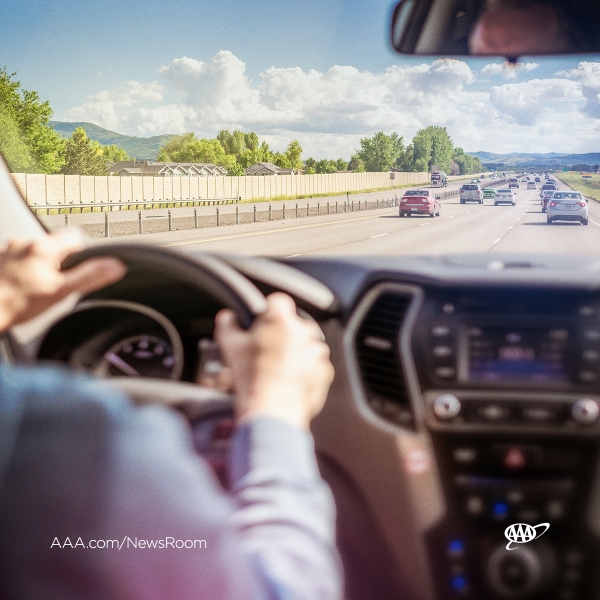AAA Cautions Consumers: Don’t Buy the Hype
AAA Cautions Consumers: Don’t Buy the Hype

Motorists using active driving assistance systems, which combine vehicle acceleration with braking and steering, tend to overlook safety limitations when the branding and marketing used to sell it suggest an “automated” driving experience, according to new research from the AAA Foundation for Traffic Safety. Researchers found consumer information that stresses convenience and capabilities while minimizing limitations can inflate expectations regarding what the system can do and the situations that it can handle. AAA warns that a false sense of system capabilities created by marketing campaigns can lead to dangerous scenarios on the road.
“Based on data collected from our research, subtle differences in tone and emphasis significantly influenced people’s understanding of the technology and their expectations of its capability,” said Dr. David Yang, executive director of the AAA Foundation for Traffic Safety. “These systems assist the driver and take some of the stress out of driving, but they don’t eliminate the need for drivers to pay attention.”
In this latest AAA Foundation study, 90 research participants received a brief overview of an active driving assistance system with a realistic but fictitious name. Before driving the same vehicle, half of the participants were told their system was called “AutonoDrive” and were given an upbeat training that emphasized the system’s capabilities and driver convenience. The other half of the participants were told their system was named “DriveAssist,” and their training placed greater emphasis on the system’s limitations and driver responsibility. Participants trained on AutonoDrive came away with greater confidence — and in some cases, overconfidence — in the system. After completing the training and driving the test vehicle, 42% of the participants using AutonoDrive, said its name made the system sound more capable than it is, while only 11% of DriveAssist users felt the same. Also, compared to those who learned about DriveAssist, participants trained on AutonoDrive were more likely to believe erroneously that the system would behave as outlined below.
Sample Perception Differences Between AutonoDrive versus DriveAssist
| AutonoDrive | DriveAssist | |
| The system would make them feel more comfortable eating while driving | 65% | 27% |
| The system would make them feel more comfortable using a handheld cell phone | 45% | 13% |
| The system can take action to avoid a collision when a vehicle directly to the side begins steering into it to change lanes | 42% | 4% |
| The system can automatically reduce speed on a tight curve without the driver doing anything | 56% | 27% |
“From our research, it’s clear that education and training can influence users’ expectations, how they will interact with and their behaviors when using new vehicle technologies,” added Yang.
Potential consumer misunderstandings of new vehicle technology need to be addressed. In a previous survey, 40 percent of Americans told AAA they expect active driving assistance systems, with names like Autopilot and ProPILOT, to have the ability to drive the car by itself. AAA recommends that automakers provide consumers information that is not only technically accurate but also balanced in terms of setting expectations that match what consumers will ultimately experience on the road. For consumers, there must be an emphasis on driver engagement and understanding the limitations of these technologies. Car dealers have a responsibility to educate car buyers on these technologies, but not to oversell a vehicle’s bells and whistles.
“Automakers are in the business of selling vehicles. Understandably, they will emphasize convenience and system capabilities in their marketing campaigns. But, their marketing campaigns, materials and consumer information should not mislead motorists,” said Jake Nelson, AAA director of traffic safety advocacy and research. “Words matter. We can do better by taking care to be more realistic in setting expectations for consumers such that the sale of a new vehicle does not come at the expense of safety.”
Drivers have a role to play, too. They are responsible for taking the time to understand the technology in their vehicle. New features, functions, and limitations should be understood before leaving the lot. Additional AAA Foundation research examined active driving assistance in on-road driving with research participants and found that when motorists receive detailed, comprehensive training on the system, they initially pay more attention to the overall driving task. To reduce misuse or overreliance on the systems, AAA recommends that new vehicle owners follow this PLAN:
- Purpose – Learn the purpose of active driving technology by reading the vehicle’s owner’s manual and visiting the manufacturer’s website.
- Limitations – Understand what the technology cannot do; do not make any assumptions about automation. An active driving system should not be confused with a self-driving one.
- Allow Time For Testing – Allow time for safe on-road testing, so drivers know exactly how this technology works in real driving situations.
- Never Rely On It – Do not rely on this technology; instead, act as if the vehicle does not have it with the driver always prepared to retake control if needed.
For more information, visit AAAFoundation.org and Newsroom.AAA.com.
About AAA Foundation for Traffic Safety: Established in 1947 by AAA, the AAA Foundation for Traffic Safety is a nonprofit, publicly funded, 501(c)(3) charitable research and educational organization. The AAA Foundation’s mission is to prevent traffic deaths and injuries by researching their causes and by educating the public about strategies to prevent crashes and reduce injuries when they do occur. This research develops educational materials for drivers, pedestrians, bicyclists and other road users.
About AAA: AAA provides more than 61 million members with automotive, travel, insurance and financial services through its federation of 32 motor clubs and more than 1,000 branch offices across North America. Since 1902, the not-for-profit, fully tax-paying AAA has been a leader and advocate for safe mobility. Drivers can request roadside assistance, identify nearby gas prices, locate discounts, book a hotel or map a route via the AAA Mobile app. To join, visit AAA.com.












